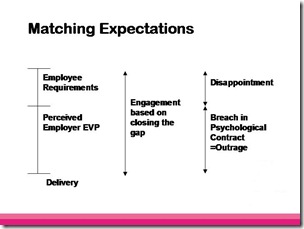The new carnival is being hosted by Alison at
Ask a Manager.
My own post is on social leadership, or communityship, and comes from my Social Business blog. And there's a few other posts which refer to this subject too.
The Career Encouragment blog notes that as the workplace is communal, in order for an organisation to move forward, we have to work together on things.
Talented Apps has a review of Seth Godin's latest book, Tribes: We Need You to Lead Us. I haven't read this yet, but I think this quote shows the opportunity for communityship, both within and outside of organisations:
” Tribes are about faith - about belief in an idea and in a community. And they are grounded in respect and admiration for the leader of the tribe and for the other members as well. …There are tribes everywhere now, inside and outside of organizations, in public and private in nonprofit, in classrooms, across the planet. Every one of these tribes is yearning for leadership and connection.”
I also liked Rick's post on culture, posted at Flip Chart Fairy Tales. And I feel similarly about his quote that:
"If I hear one more person say that ‘Culture is the way we do things around here’ I will be sick. As a definition of culture it is all but useless. If that’s all it is, you’d just change the way you do things and be done with it."
Culture's such a loose phrase, and has been so overused that it's now a very nearly valueless concept. For example, Ulrich's definition, "the identity of the firm in the mind of your best customers, your firm brand or reputation", is a definition of employer brand, not, to most peoples minds, of culture.
One aspect, as Rick notes, is beliefs and assumptions. These, and values, are at the heart of what culture is generally seen to be about and is often, but now always, what people mean when they talk about culture change*. But then if that's what we mean, let's say what we mean.
Or it can be different aspects of Johnson and Scholes' cultural web, for example the organisation structure (real or intended) - as in Charles Handy's power, role, task and person focused model. It's almost always vital to unpick these different elements, and understand which one or ones need to change. I quite often use Hofstede's or Schein's onion models for this.
And I think the three elements of organisational capability: human, organisation and social capital (the product of social leadership / communityship - see above) provide a useful breakdown too (because each of these three elements need to be managed / developed in very different ways). So in big organisational changes for example, when we're already dealing separately with values, structure, business processes etc, the word 'culture' is often used to refer to social capital.
Quite often we're really talking about alignment between these different elements, and between these and the business strategy or organisational capability.
Whatever it is, understanding precisely what we're talking about is the first step towards being able to change it effectively.
* By the way, I think changing values, beliefs and assumptions is nearly impossible, unless 1. there's enough impetus behind it - a big idea, BHAG or organisational mojo that helps clarify, articulate and focus thinking about what the change needs to be (and ensures the desired state can be a competitive differentiator). Or 2. an awful lot of energy, commitment and time going into it. Or 3. It is allowed to emerge from the organisation, rather than being sold from the top down.


































 Ulrich's new book
Ulrich's new book




















